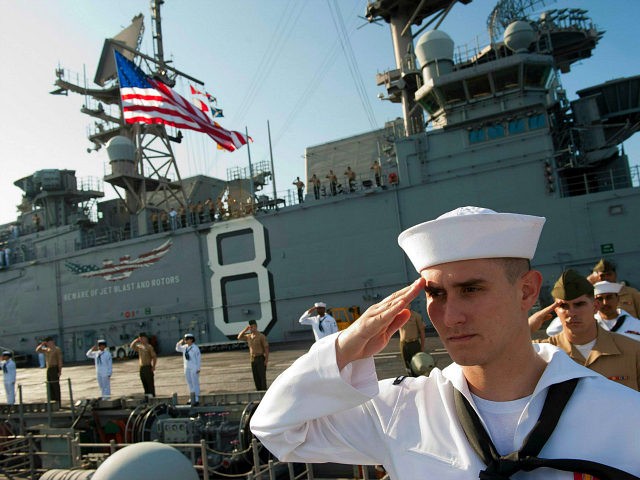WASHINGTON, DC — The U.S. Navy needs an additional 6,200 sailors to fulfill its mission requirements across the world, prompting military leaders to prevent two ships from deploying on recent missions they were not prepared to handle, two top admirals told lawmakers this week.
Referring to the manpower shortages during a joint hearing Tuesday held by the House Armed Services Subcommittees on readiness and seapower, Adm. Christopher Grady, the chief of U.S. Fleet Forces Command and U.S. Naval Forces Northern Command told lawmakers:
We have some manning challenges that we’re working through, right now. The number, specifically, is the 6,200 billets at sea that are not filled right now. …From a manning and a training perspective, you will only go do those missions that you are trained and certified to do, even before the ultimate certification for deployment. …There have been several occasions where I have said, that ship’s not ready, we’ll need more time.
Adm. John C. Aquilino, the commander of U.S. Pacific Fleet who testified alongside Grady, added:
If the ships in the Pacific fleet are not ready to safely sail, they don’t get underway and that is my responsibility. The improvements we are making are ongoing. It’s also important to note that the readiness of the fleet is fragile and it is, also, perishable. We are committed to ensuring our units are manned, trained, and equipped to execute the nation’s calling.
Citing certification issues, Adm. Aquilino revealed, “We have terminated two deployments or units that were not assessed to have the appropriate level of training to deploy and execute their missions.
Aquilino revealed that he was forced to cancel a warship’s deployment in support of a deployment to the South Pacific island and sent one less vessel to participate in the 2018 Rim of the Pacific exercise, citing the moves as risks the U.S. Navy was forced to incur due to ongoing sailor shortages and training problems.
“Then we took [a] risk with regard to surge forces that if [a] crisis were to have broken out, they would have needed additional training before they could have gone,” he added.
According to the 2019 Index of U.S. Military Strength released in October 2018 by the Heritage Foundation, the United States military is only “marginally able” to defend America against the current high levels of risk primarily fueled by “formidable” U.S. rivals China and Russia.
The think-tank determined that the American armed forces are “ill-equipped” to fight two major wars.
Military.com noted that the U.S. Navy only recently started certifying ships before deploying them on missions, adding:
[Certifications mark] a change from the climate described in the investigations into a pair of 2017 ship collisions in the Pacific that killed 17 sailors. Those probes found that at least one of those ships was short staffed and hadn’t completed all its redeployment certifications, yet it still steamed toward the South China Sea on a secret mission.
Adm. Grady told lawmakers all ships must now have the adequate personnel, equipment, and training to go on missions. He warned that manpower shortages are a problem, adding that it could take years to fill the U.S. Navy’s 6,200 vacant sea billets and train those sailors.

COMMENTS
Please let us know if you're having issues with commenting.